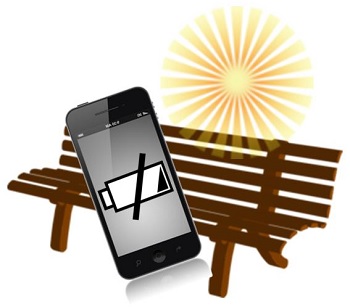Wearable devices will be used in new study from the Michael J. Fox Foundation and Intel
Wearable technology may hold some promise when it comes to researching Parkinson’s Disease. The Michael J. Fox Foundation and Intel have teamed together to study how wearable devices could be used to detect data on the various symptoms of the disease. The information will be uploaded into a cloud computer network and this information will be available to researchers for free. Some 60,000 people in the U.S. alone are diagnosed with Parkinson’s Disease every year and understanding this affliction is beginning to become more important.
Mobile technology is beginning to see more practical uses
Mobile technology plays a significant role in society today, but typically only fills entertainment and social needs. Smartphones allow people to stay in constant contact with one another through the Internet and through a mobile network. Beyond that, mobile technology has only very recently begun to see more attention as a way to gather information about certain medical problems and similar issues.
Study aims to help patients keep track of their symptoms more effectively
 Through the study, data concerning the slowness of movement, tremors, and sleep quality of those suffering from Parkinson’s Disease will be collected. Wearable devices may also help patients self-report their symptoms and how these symptoms affect their lives more efficiently. A small-scale study was held earlier this year in which patients used wearable devices to offer up information about their symptoms. Those participating in the study noted that wearable devices kept track of their symptoms more effectively.
Through the study, data concerning the slowness of movement, tremors, and sleep quality of those suffering from Parkinson’s Disease will be collected. Wearable devices may also help patients self-report their symptoms and how these symptoms affect their lives more efficiently. A small-scale study was held earlier this year in which patients used wearable devices to offer up information about their symptoms. Those participating in the study noted that wearable devices kept track of their symptoms more effectively.
Wearable technology has seen little practical use in the past few years, but that may be changing quickly
Wearable technology is gaining popularity, but wearable devices are typically seen as novelty rather than practical tools. Most wearable devices have to do with entertainment in some way, while others exist for social media purposes. There are very few of these devices currently available that represent some practical use. Some smartwatches, for instance, exist that help keep track of health information, but wearable devices have seen little practical use beyond this.

 Chief exec of Changing Environments, Sandra Richter, assures users that the Soofa mobile device charger is equipped with stringent security measures in order to help to prevent attempts to use the USB ports for this type of malicious activities.
Chief exec of Changing Environments, Sandra Richter, assures users that the Soofa mobile device charger is equipped with stringent security measures in order to help to prevent attempts to use the USB ports for this type of malicious activities.